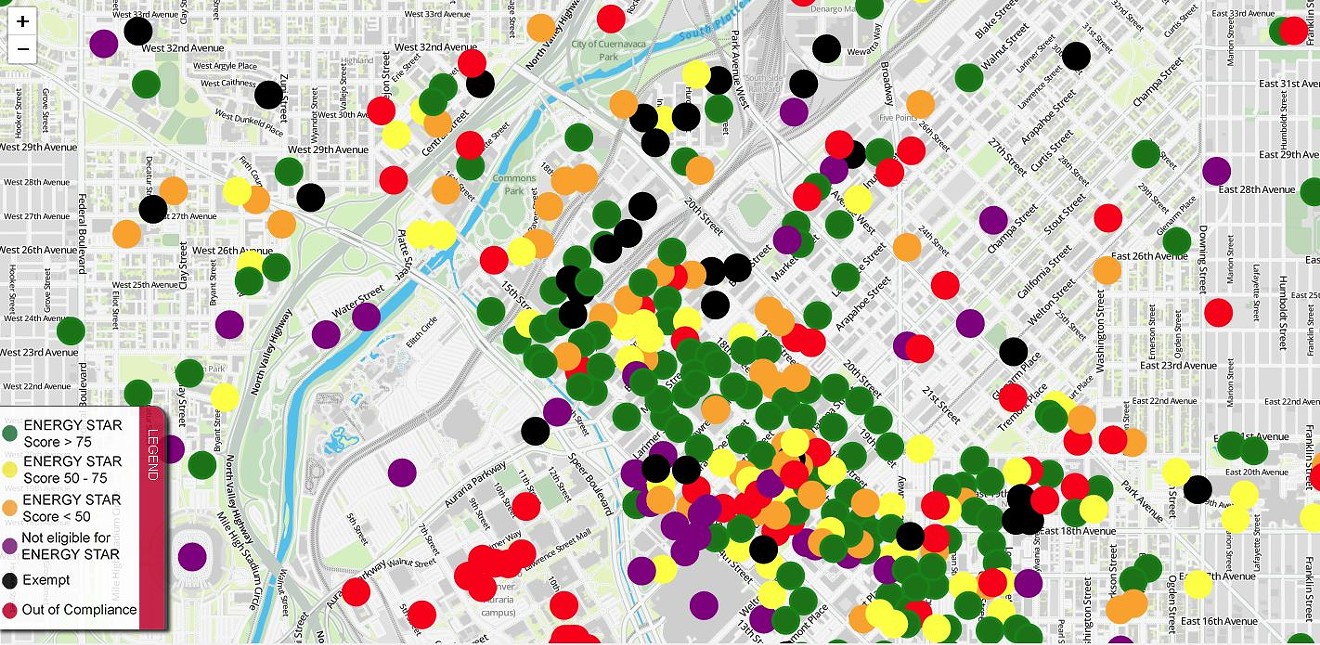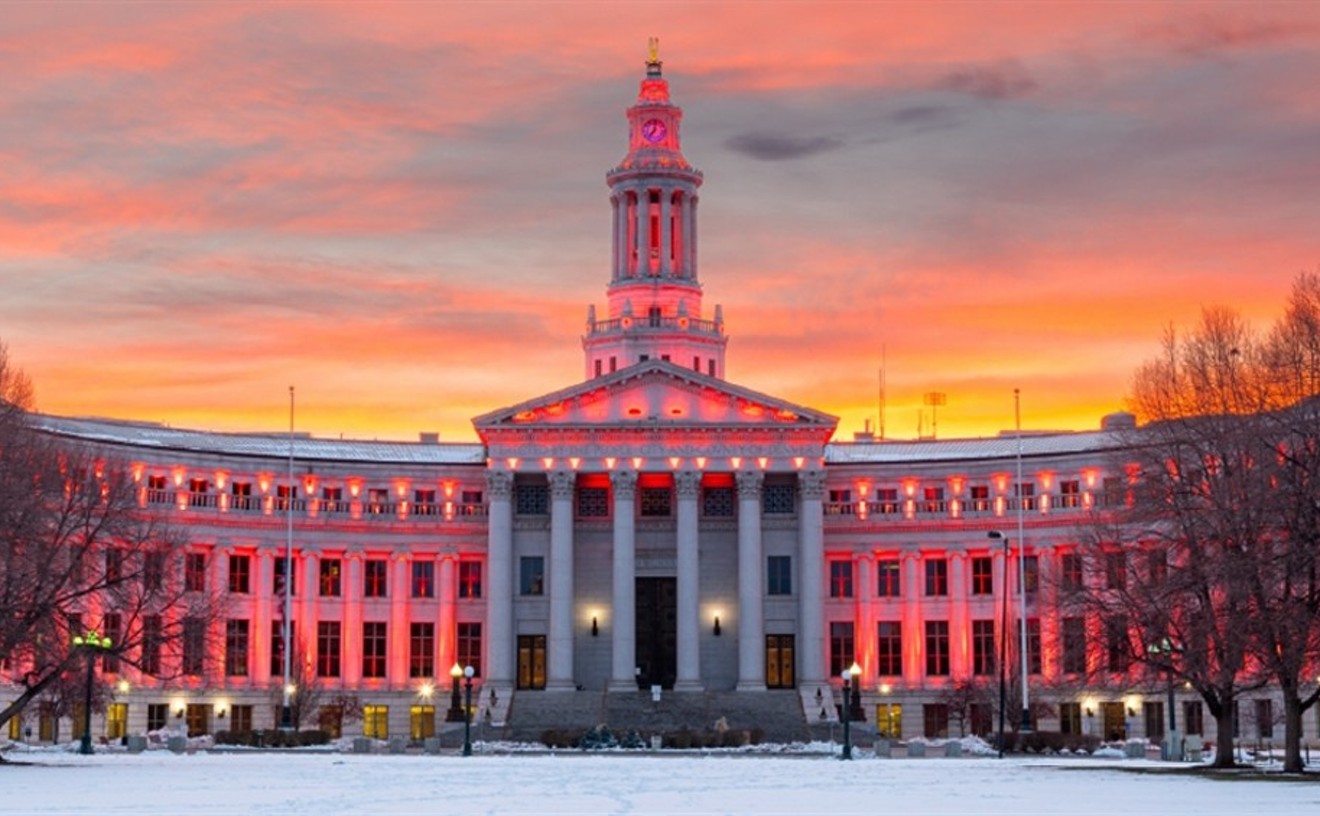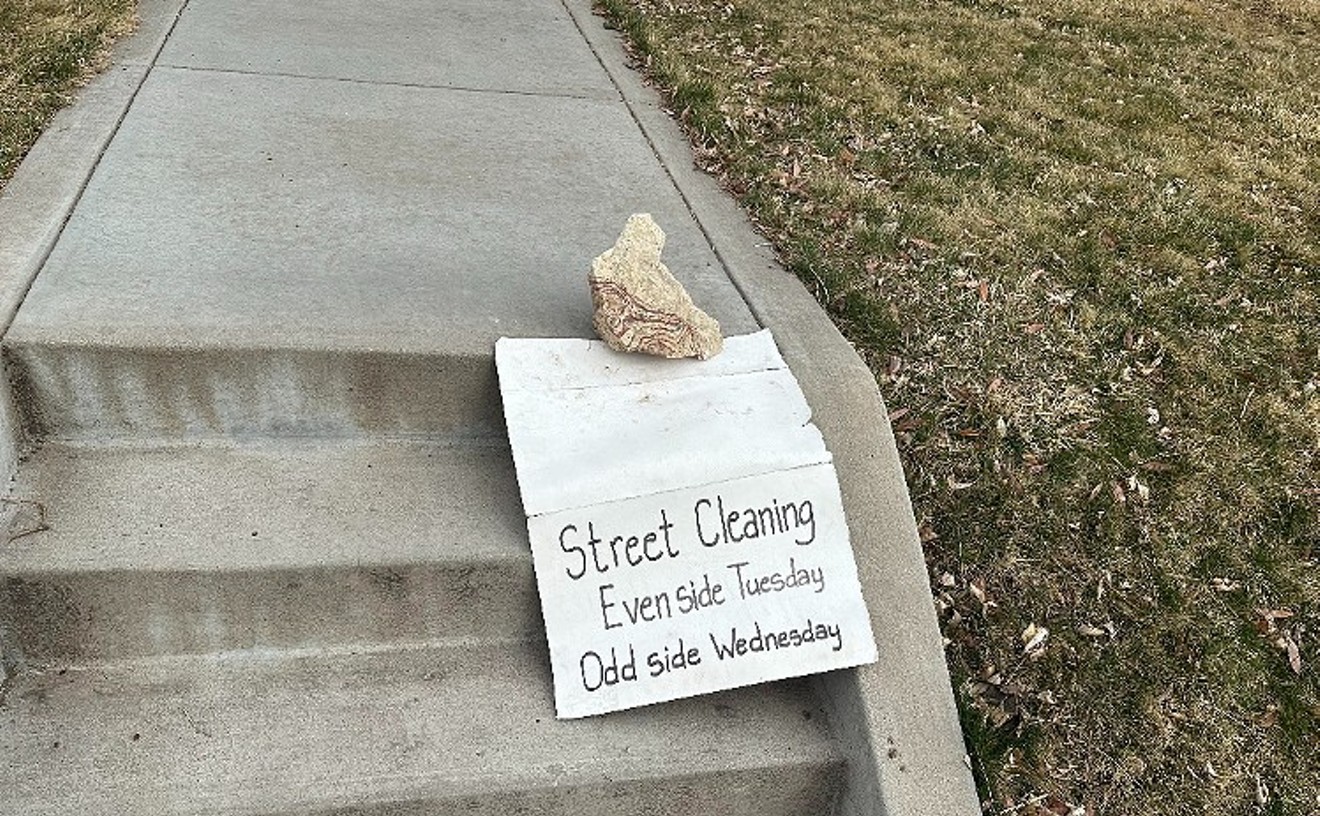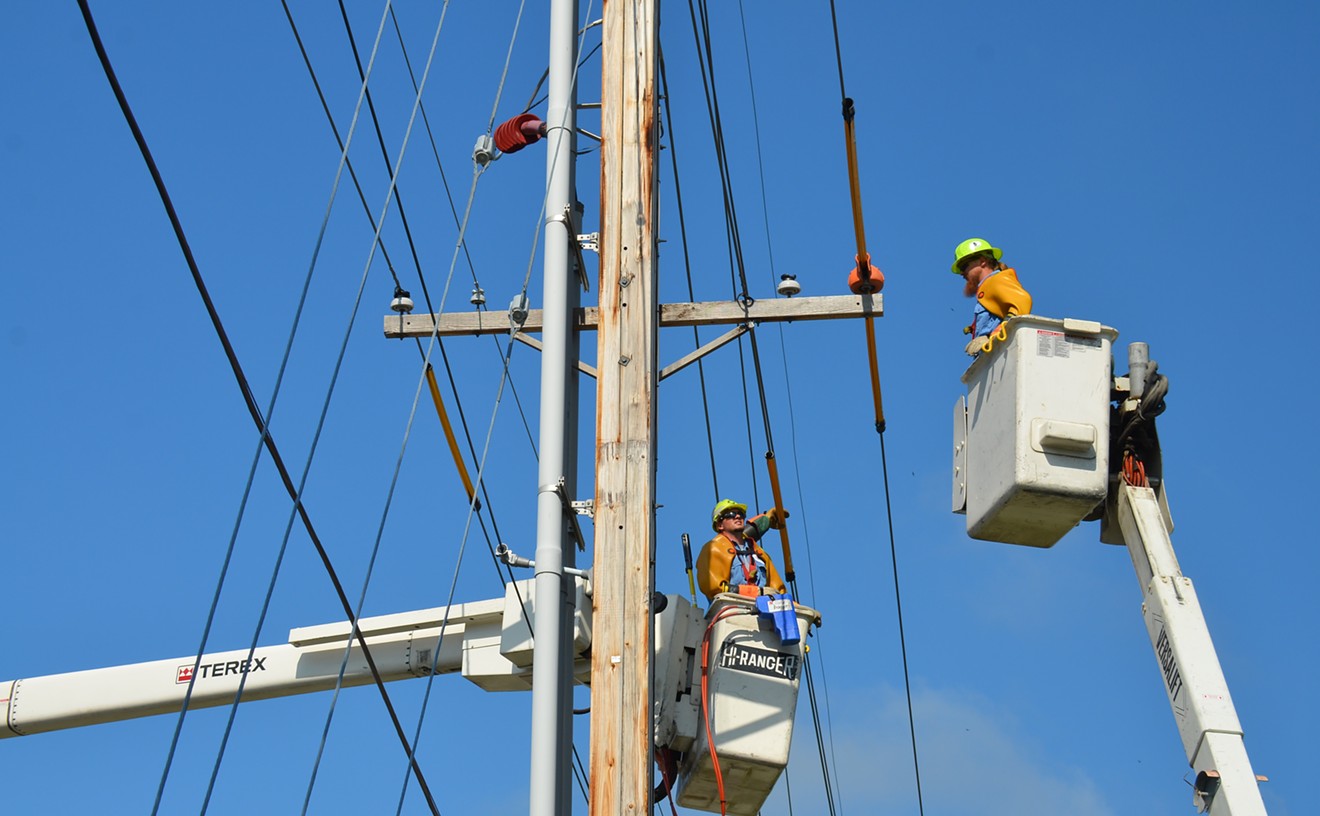We Coloradans like to think of ourselves as being environmentally conscious, and there's some truth to that assertion. In November, for instance, Denverites approved the most far-reaching green-roof initiative in the country, which requires buildings over 25,000 square feet to dedicate portions of their roofs to solar panels or gardens.
But underneath those roofs, how many buildings in Denver are truly “green"?
The Denver Department of Public Health and Environment has released an interactive map that ranks buildings across the city based on their energy efficiency. It's like Google Maps, except you can zoom in on individual buildings and check their Energy Star scores, which reflect a structure's energy efficiency on a 1-100 scale. (For a more technical description of Energy Star scores, click here.)
According to the city, the map reflects data collected under the Energize Denver ordinance, which was enacted in December 2016 with the goal of reducing Denver's greenhouse gas emissions to 80 percent below 2005 levels by 2050.
The Department of Public Health and Environment claims that energy use from heating and cooling buildings is the single largest source of greenhouse gas emissions in Denver, accounting for approximately 57 percent of the city’s carbon emissions.
“Measuring public energy performance scores is a major milestone toward achieving the city’s goal of reducing greenhouse gas emissions 80 percent below 2005 levels by 2050,” says Katrina Managan, senior advisor at the DPHE. “Benchmarking the energy performance of a building is the first step toward understanding and reducing its energy consumption, which is directly tied to harmful emissions.”
So far, the city's efforts to curb emissions has been largely successful. In conjunction with releasing the map, the city reports a 90 percent compliance rate with energy-efficiency goals for buildings 50,000 square feet and over. Next year, the city will phase in buildings of 25,000 square feet and omoreer, and hopes to eventually create 4,000 local jobs and $1.3 billion in energy savings over ten years through its Energize Denver initiative.
[
{
"name": "Air - MediumRectangle - Inline Content - Mobile Display Size",
"component": "12017618",
"insertPoint": "2",
"requiredCountToDisplay": "2"
},{
"name": "Editor Picks",
"component": "17242653",
"insertPoint": "4",
"requiredCountToDisplay": "1"
},{
"name": "Inline Links",
"component": "18838239",
"insertPoint": "8th",
"startingPoint": 8,
"requiredCountToDisplay": "7",
"maxInsertions": 25
},{
"name": "Air - MediumRectangle - Combo - Inline Content",
"component": "17261320",
"insertPoint": "8th",
"startingPoint": 8,
"requiredCountToDisplay": "7",
"maxInsertions": 25
},{
"name": "Inline Links",
"component": "18838239",
"insertPoint": "8th",
"startingPoint": 12,
"requiredCountToDisplay": "11",
"maxInsertions": 25
},{
"name": "Air - Leaderboard Tower - Combo - Inline Content",
"component": "17261321",
"insertPoint": "8th",
"startingPoint": 12,
"requiredCountToDisplay": "11",
"maxInsertions": 25
}
]












